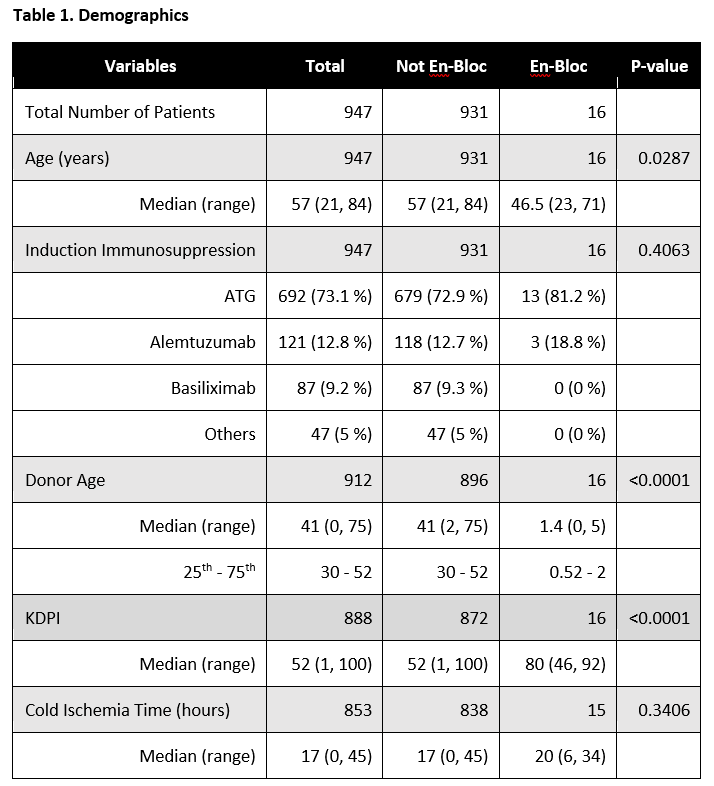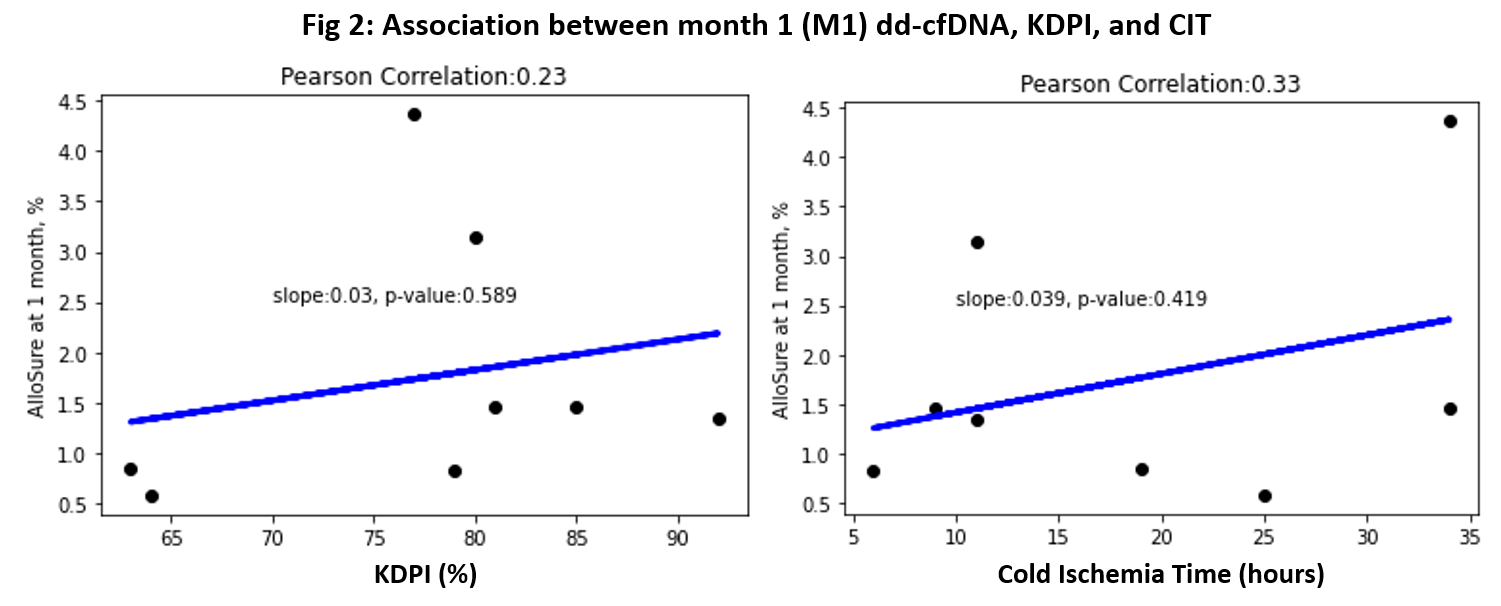Longitudinal analysis of donor-derived cell-free DNA (dd-cfDNA) in en-bloc kidney transplantation
Sanjeev K. Akkina2, Neeraj Singh3, Jeffrey Klein4, Ali Khalil5, Nikhil Agrawal1, Grigory Shekhtman1, Shree Patel1, Mingwei Fei1, Amishi Desai2.
1Kidney Transplant, CareDx, Brisbane, CA, United States; 2Medicine, Loyola University Medical Center, Maywood, IL, United States; 3Medicine, Willis Knighton Health System, Shreveport, LA, United States; 4Medicine, University of Kansas, Kansas City, KS, United States; 5Medicine, Dallas Nephrology Associates, Dallas, TX, United States
Introduction: The longitudinal dd-cfDNA patterns in en-bloc kidney transplant recipients have not been studied. It is unknown how the initial smaller mass of thetwo pediatric organs impacts dd-cfDNA early post-transplant or if the dd-cfDNA rises over time as the organs enlarge. We analyzed dd‐cfDNA scores over thefirst 12 months in recipients of pediatric en-bloc kidneys enrolled in the Kidney allograft Outcomes AlloSure Registry (KOAR, NCT03326076).
Methods: 16 recipients of pediatric en-bloc kidneys with donors aged ≤7 years old were identified and compared with 931 single, non en-bloc deceased donorrecipients. Patients with rejection were excluded.
Results: Of the 16 en-bloc recipients, 56.2% were male with median donor age of 1.4 years and median cold ischemia time (CIT) of 20 hours. None of the en-bloc transplants had delayed graft function. Aside from KDPI, donor age, and recipient age, no other differences were observed between groups (Table 1).

Higher median dd‐cfDNA values were seen in the en-bloc cohort compared to not en-bloc at month 1 (M1, 1.4% vs 0.4%) and month 2 (0.58% vs 0.23%) aftertransplant (p<0.001) (Figure 1a). Median dd-cfDNA values were comparable for month 3 (0.21% vs 0.16%, p = 0.07) and all subsequent time points (Figure 1a, 1b). Among 8 patients with M1 dd-cfDNA results, there was no significant association between M1 dd-cfDNA and either CIT (r=0.33, p=0.419) or KDPI (r=0.23,p=0.589) (Figure 2).


Conclusion: Our results demonstrate higher early post-transplant dd-cfDNA values among en-bloc kidney compared to single kidney recipients however, nodifference or upward trend is observed beyond month 2 and out to 12 months.

right-click to download
